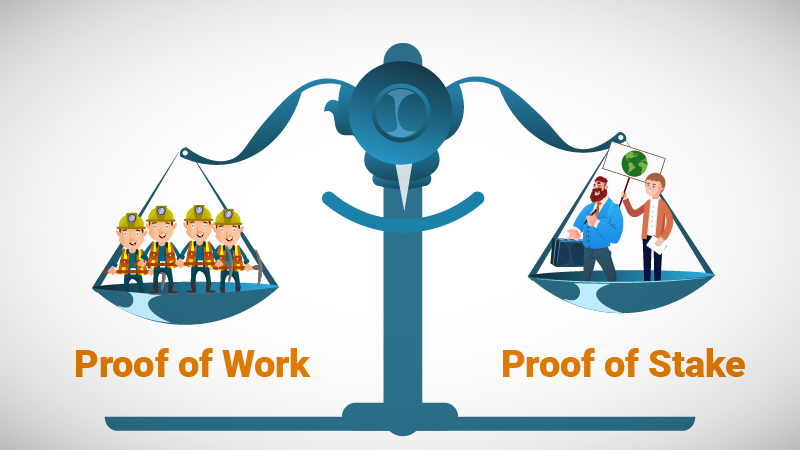Although Blockchain and the associated Bitcoin are considered to be merely buzzwords defined by the financial hype and crash of 2017 there are still a lot of meaningful opportunities for companies to adopt the blockchain technology. In order to stimulate such adaptations it is of benefit to create some order in the convoluted landscape A colleague already explained the difference between a private chain and a public chain. Allow me to explain the difference between proof of work and proof of stake.
Both are ways for miners to validate transactions but they differ on multiple levels. The Proof of Work mechanism, founded by the inventor of the Bitcoin, forces miners to brute force a mathematical puzzle in order to ‘mine’ and thus approve a block of transactions. The first miner to solve the puzzle will be rewarded with the block reward. The brute forcing consumes a lot of electrical power as powerful GPU’s are a necessary evil.
The Proof of Stake was founded to counter the massive power drainage of Proof of Work. For the Proof of Stake mechanism to work the miners has to lock a currency in a digital safe. The larger the value of the currency the bigger the chance is that the miner is allowed to approve a block of transactions. When he or she chooses to verify blocks with invalid transactions, the locked away currency is destroyed, incentivizing valid approvals.
Aside from these two mechanism, there are a bunch of others currently being developed. However these two mechanisms are currently the most adopted in public chains. In private chains however these mechanisms don’t gather that much attention as the mining of blocks can be done in whichever way the company likes, possibly removing it all together.
I hope to have cleared up some of the confusing surrounding blockchain
https://blockgeeks.com/guides/proof-of-work-vs-proof-of-stake/

